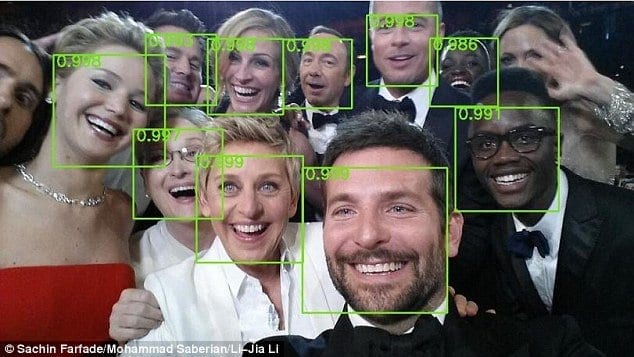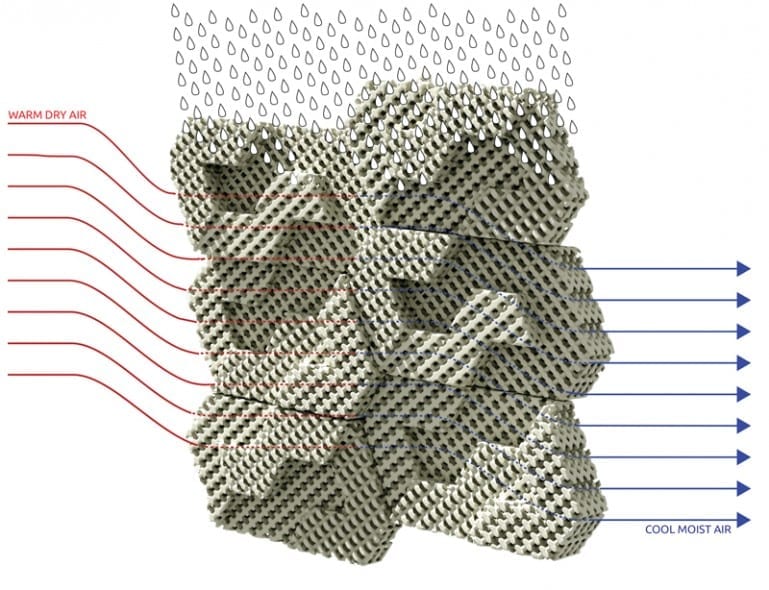
Picking faces out of a crowd is something humans are hardwired to do, but training computers to act in the same way is much more difficult.
There have been various breakthroughs in this field in recent months, but the latest could be the most significant yet.
Researchers from Yahoo Labs and Stanford University have developed an algorithm that can identify faces from various different angles, when part of the face is hidden and even upside down.
At the moment, the so-called Deep Dense Face Detector doesn’t recognise who the individual faces belong to, just that there is a face.
But the technology has the potential to be trained in this way.
The algorithm was built by Sachin Farfade and Mohammad Saberian at Yahoo Labs in California and Li-Jia Li at Stanford University.
It built on the Viola-Jones algorithm which spots front-facing people in images by picking out key facial features such as a vertical nose and shadows around the eyes.
By collecting these markers, the algorithm is able to determine if an image contains a face or not.
But, this did not account for faces that have been obscured, are looking in various directions, or were upside down.
With this in mind, Mr Farfade and his team used a form of machine learning known as a deep convolutional neural network.
This involves training a computer to recognise elements of images from a database using various layers.
Google used a similar technique for its recent GoogLeNet classification algorithm that can identify images within images, such as a hat on the head of a dog sat on a bench.
Mr Farfade trained his algorithm using a database of 200,000 images featuring faces shown at various angles and orientations, plus 20 million images that didn’t contain faces.
In their paper, the researchers said: ‘In this paper we propose a method based on deep learning, called Deep Dense Face Detector.’
‘It has minimal complexity…and can get similar or better performance [than other systems] while it does not require annotation or information about facial landmarks.’
And, the team said the technology could be improved following further training.
The Latest on: Facial recognition
[google_news title=”” keyword=”Facial recognition” num_posts=”10″ blurb_length=”0″ show_thumb=”left”]
via Google News
The Latest on: Facial recognition
- Three-judge panel says cops can force you to unlock your phone using your fingerprint or faceon April 27, 2024 at 2:46 pm
An appeals court ruling with limited reach allows cops to force suspects to unlock their phones using fingerprint or facial recognition.
- Facial recognition likely for TS EAPCETon April 27, 2024 at 11:25 am
A student will be permitted for the examination if the captured photograph matches the one in the registration form.
- Metro board ponders facial recognition, other security measures after subway killingon April 26, 2024 at 3:00 am
Could AI have prevented the killing of a woman on an L.A. subway. Metro is looking at facial recognition technology, fare gates and new station designs to address security concerns amid a wave of ...
- China orders hotels to scrap facial recognition over privacy fearson April 25, 2024 at 1:31 pm
Cities in China are banning hotels from using facial recognition, a sign that the government is recognizing the public’s privacy concerns.
- Facial Recognition at Airports vs. Facial Analysis at Events: What to Knowon April 25, 2024 at 12:05 pm
As Congress debates the use of facial identification for airport security, planners should know how that technology differs from the one that measures attendee engagement during sessions.
- Why aren’t California lawmakers banning police from using facial recognition technology? | Opinionon April 25, 2024 at 6:00 am
Legislative half measures, like Assembly Bill 1814, all but guarantee that police will make more wrongful arrests based off of flawed technology.
- Shanghai Bans Mandatory Use of Facial Recognition in Hotelson April 24, 2024 at 10:04 pm
Local authorities say forcing guests to use face scanners during check-in will be “strictly forbidden,” as the practice represents a privacy and data security risk.
- AI can apparently predict a person's political stance just by reading their faceon April 24, 2024 at 3:50 pm
A study recently published in the peer-reviewed American Psychologist journal claims that a combination of facial recognition and artificial intelligence technology can accurately assess a person’s ...
- Supermarket facial recognition failure—why automated systems must put the human factor firston April 22, 2024 at 8:37 am
The incident of a woman misidentified by facial recognition technology at a Rotorua supermarket should have come as no surprise.
- Smart gun will put fingerprint, facial recognition technology to workon April 18, 2024 at 6:00 am
The Biofire Smart Gun features both built-in fingerprint and infrared facial recognition technology that only permits use by "authorized" individuals, according to the company.
via Bing News










